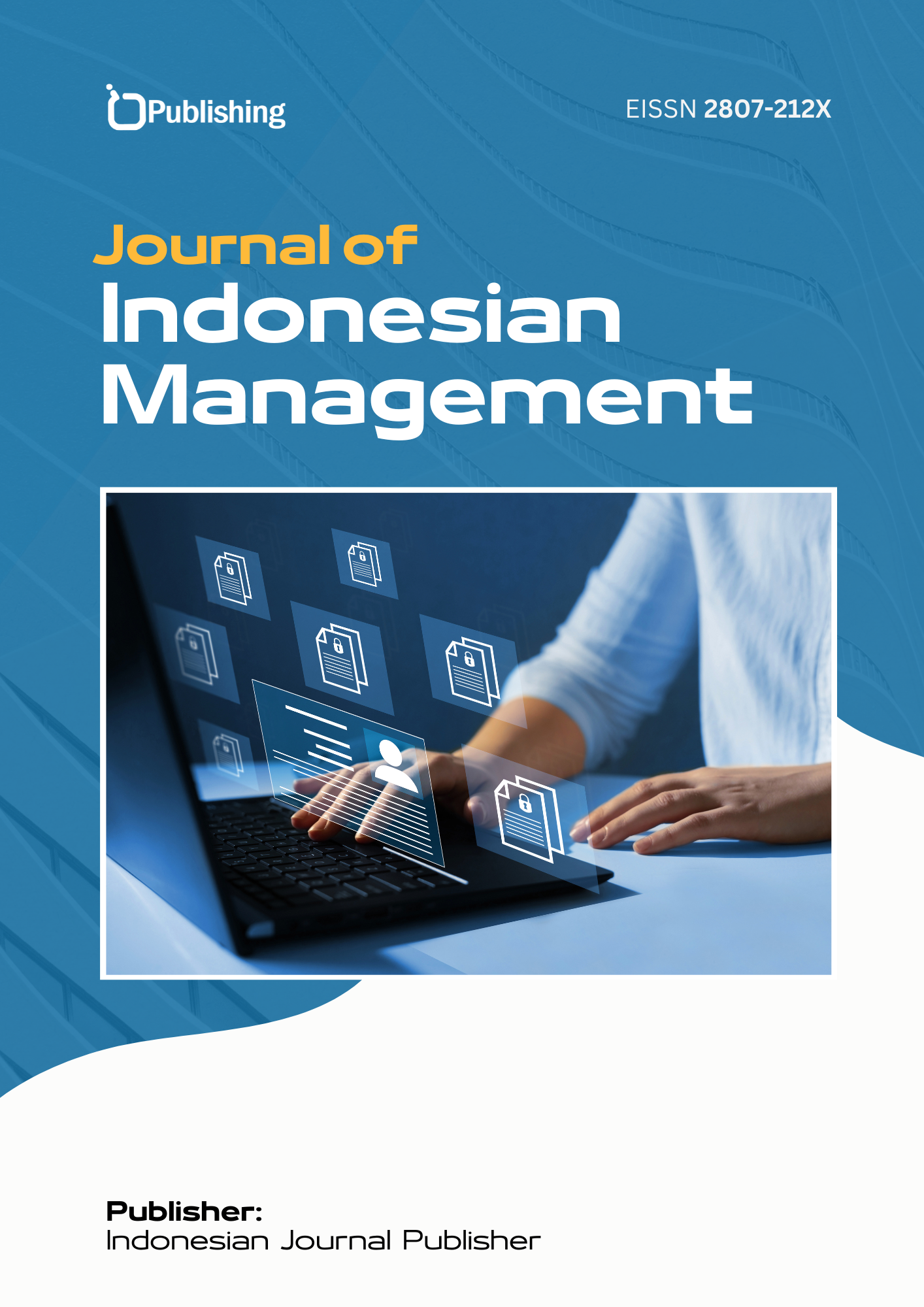Blockchain for Marketing Transparency and Trust: Applications in Supply Chain and Customer Loyalty Programs
DOI:
https://doi.org/10.53697/jim.v5i2.2422Keywords:
Blockchain, Marketing, Transparency, Trust, Supply Chain, Customer Loyalty ProgramsAbstract
Blockchain for Marketing Transparency and Trust: Applications in Supply Chain and Customer Loyalty Programs. The increasing demand for transparency and trust in marketing practices necessitates innovative solutions. This paper explores the potential of blockchain technology to enhance transparency and build trust in two critical marketing areas: supply chain management and customer loyalty programs. By providing a decentralized, immutable, and auditable ledger, blockchain can offer unprecedented visibility into product origins, ethical sourcing, and the secure management of loyalty rewards. 1 This study examines the theoretical underpinnings of blockchain and analyzes potential applications and benefits for both businesses and consumers. Specifically, it investigates how blockchain can improve supply chain transparency by tracking product journeys from origin to consumer, and how it can revolutionize customer loyalty programs by ensuring secure and transparent reward distribution and redemption. Furthermore, the paper discusses the challenges and opportunities associated with implementing blockchain in these marketing contexts. Ultimately, this research argues that blockchain technology holds significant promise for fostering greater transparency and trust, leading to stronger brand-consumer relationships and more ethical marketing practices.
References
Alesina, A., Hohmann, S., Michalopoulos, S., & Papaioannou, E. (2023). Religion and educational mobility in Africa. Nature, 618(7963), 134–143. https://doi.org/10.1038/s41586-023-06051-2
Anselmo, A., Materazzo, M., Di Lorenzo, N., Sensi, B., Riccetti, C., Lonardo, M. T., Pellicciaro, M., D’Amico, F., Siragusa, L., & Tisone, G. (2023). Implementation of Blockchain Technology Could Increase Equity and Transparency in Organ Transplantation: A Narrative Review of an Emergent Tool. Transplant International, 36(February), 1–11. https://doi.org/10.3389/ti.2023.10800
Brouwer, M. A., Maeckelberghe, E. L. M., Van Der Heide, A., Hein, I. M., & Verhagen, E. A. A. E. (2021). Breaking bad news: What parents would like you to know. Archives of Disease in Childhood, 106(3), 276–281. https://doi.org/10.1136/archdischild-2019-318398
Chinedu-Eneh, E., Ramaswamy, P., & Farmer, P. E. (2024). Blockchain-Based Healthcare Credentialing: A Solution to High Costs and Administrative Burdens. Cureus, 16(6), 10–15. https://doi.org/10.7759/cureus.63318
Fadler, R. E., & Flood, A. H. (2022). Rigidity and Flexibility in Rotaxanes and Their Relatives; On Being Stubborn and Easy-Going. Frontiers in Chemistry, 10(April), 1–22. https://doi.org/10.3389/fchem.2022.856173
Ferrand, A., Poleksic, J., & Racine, E. (2022). Factors Influencing Physician Prognosis: A Scoping Review. MDM Policy and Practice, 7(2), 1–16. https://doi.org/10.1177/23814683221145158
Glanz, K., Fenoglio, C., Quinn, R., Karpyn, A., & Giordano, D. P. (2021). Consumers’ Ability to Distinguish between Milk Types Results of Blind Taste Testing. Family and Community Health, 44(3), E1–E6. https://doi.org/10.1097/FCH.0000000000000284
Gürsoy, G., Brannon, C. M., Ni, E., Wagner, S., Khanna, A., & Gerstein, M. (2022). Storing and analyzing a genome on a blockchain. Genome Biology, 23(1), 1–22. https://doi.org/10.1186/s13059-022-02699-7
Krishnamurthi, R. V., Gall, S., Martins, S. O., Norrving, B., Pandian, J. D., Feigin, V. L., & Owolabi, M. O. (2024). Pragmatic Solutions to Reduce Global Stroke Burden: World Stroke Organization – Lancet Neurology Commission Report. Neuroepidemiology, 58(4), 310–316. https://doi.org/10.1159/000535377
Lauber, K., Rutter, H., & Gilmore, A. B. (2021). Big food and the World Health Organization: A qualitative study of industry attempts to influence global-level non-communicable disease policy. BMJ Global Health, 6(6). https://doi.org/10.1136/bmjgh-2021-005216
Lee, K. H., Low, L. L., Lu, S. Y., & Lee, C. E. (2023). Implementation of social prescribing: lessons learnt from contextualising an intervention in a community hospital in Singapore. The Lancet Regional Health - Western Pacific, 35, 100561. https://doi.org/10.1016/j.lanwpc.2022.100561
Li, H., Yang, X., Wang, H., Wei, W., & Xue, W. (2022). A Controllable Secure Blockchain-Based Electronic Healthcare Records Sharing Scheme. Journal of Healthcare Engineering, 2022. https://doi.org/10.1155/2022/2058497
Mokhamed, T., Talib, M. A., Moufti, M. A., Abbas, S., & Khan, F. (2023). The Potential of Blockchain Technology in Dental Healthcare: A Literature Review. Sensors, 23(6), 1–18. https://doi.org/10.3390/s23063277
Moodie, R., Bennett, E., Kwong, E. J. L., Santos, T. M., Pratiwi, L., Williams, J., & Baker, P. (2021). Ultra-Processed Profits: The Political Economy of Countering the Global Spread of Ultra-Processed Foods - A Synthesis Review on the Market and Political Practices of Transnational Food Corporations and Strategic Public Health Responses. International Journal of Health Policy and Management, 10(12), 968–982. https://doi.org/10.34172/ijhpm.2021.45
Orou Seko, M., Ossebi, W., Laré, N., & Bonfoh, B. (2021). Understanding the Relationships Between the Consumer Perception on Food Risks, Quality, and Safety Indicators of Braised Meat Sold in “Dibiterie” Restaurants in Dakar, Senegal. Frontiers in Veterinary Science, 8(November), 1–14. https://doi.org/10.3389/fvets.2021.788089
Paulose-Ram, R., Graber, J. E., Woodwell, D., & Ahluwalia, N. (2021). The National Health and Nutrition Examination Survey (NHANES), 2021-2022: Adapting Data Collection in a COVID-19 Environment. American Journal of Public Health, 111(12), 2149–2156. https://doi.org/10.2105/AJPH.2021.306517
Study, O., Philips, C. A., & Theruvath, A. H. (2024). Citizens protein project. 14(January).
Vitaskos, V., Demestichas, K., Karetsos, S., & Costopoulou, C. (2024). Blockchain and Internet of Things Technologies for Food Traceability in Olive Oil Supply Chains. Sensors, 24(24). https://doi.org/10.3390/s24248189
Wei, Z., & Huang, Y. (2022). Supply Chain Coordination under Carbon Emission Tax Regulation Considering Greening Technology Investment. International Journal of Environmental Research and Public Health, 19(15). https://doi.org/10.3390/ijerph19159232
Yadav, A., Sachdeva, A., Garg, R. K., Qureshi, K. M., Mewada, B. G., Al-Qahtani, M. M., & Qureshi, M. R. N. M. (2024). Challenges of blockchain adoption for manufacturing supply chain to achieve sustainability: A case of rubber industry. Heliyon, 10(20), e39448. https://doi.org/10.1016/j.heliyon.2024.e39448
Downloads
Published
How to Cite
Issue
Section
License
Copyright (c) 2025 Fachri Afif, Perengki Susanto

This work is licensed under a Creative Commons Attribution 4.0 International License.













